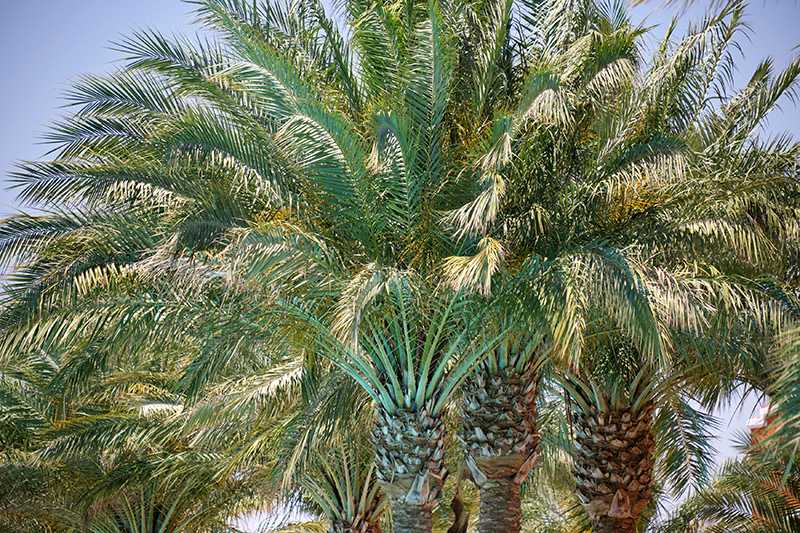Palm Paradise: Essential Care Tips for Healthy and Beautiful Palm Trees

Outline of the Article
- Introduction
- Welcome to Palm Paradise
- Why Palm Trees?
- Understanding Palm Trees
- Types of Palm Trees
- Popular Varieties
- Exotic Varieties
- Lifespan and Growth Patterns
- Types of Palm Trees
- Choosing the Right Palm Tree
- Climate Considerations
- Space and Soil Requirements
- Indoor vs. Outdoor Palms
- Planting Palm Trees
- Preparing the Soil
- Proper Planting Techniques
- Watering Schedule
- Watering Essentials
- Frequency of Watering
- Signs of Overwatering and Underwatering
- Best Practices for Different Seasons
- Fertilizing Your Palm Trees
- Types of Fertilizers
- How Often to Fertilize
- Organic vs. Chemical Fertilizers
- Pruning and Maintenance
- When and How to Prune
- Tools Needed
- Common Mistakes to Avoid
- Pest and Disease Management
- Common Pests and Symptoms
- Disease Prevention and Treatment
- Natural Remedies vs. Chemical Solutions
- Winter Care for Palm Trees
- Protecting from Frost
- Indoor Winter Care
- Winterizing Outdoor Palms
- Palm Trees in Containers
- Choosing the Right Pot
- Care Tips for Potted Palms
- Repotting Techniques
- Palm Tree Landscaping Ideas
- Designing with Palms
- Companion Plants
- Creating a Tropical Oasis
- Troubleshooting Common Issues
- Yellowing Leaves
- Stunted Growth
- Root Rot
- Benefits of Palm Trees
- Aesthetic Appeal
- Environmental Benefits
- Psychological Benefits
- Conclusion
- Recap of Essential Care Tips
- Encouragement to Create Your Own Palm Paradise
- FAQs About Palm Trees
Introduction
Welcome to Palm Paradise! If you’re dreaming of a lush, tropical haven in your backyard or even inside your home, palm trees are the perfect addition. With their elegant fronds and striking trunks, palm trees can transform any space into a serene retreat. But to keep these beauties thriving, you’ll need to know a few essential care tips. Let’s dive into the world of palm trees and explore how to keep them healthy and beautiful.
Understanding Palm Trees
Types of Palm Trees
Palm trees come in a stunning array of varieties, each with its unique charm. Understanding the different types can help you choose the right one for your garden or home.
Popular Varieties
Some popular palm tree varieties include the majestic Canary Island Date Palm, the versatile Areca Palm, and the elegant Queen Palm. Each of these varieties has distinct characteristics, such as size, frond shape, and growth habits.
Exotic Varieties
If you’re looking for something more unique, consider exotic varieties like the Bismarck Palm with its silver-blue fronds or the Bottle Palm, known for its bulbous trunk. These palms can add a touch of the extraordinary to your landscape.
Lifespan and Growth Patterns
Palm trees can live for many decades, with some species thriving for over a century. Their growth patterns vary, with some growing quickly and others taking their time to reach full height. Understanding the growth pattern of your chosen palm is crucial for proper care and planning.
Choosing the Right Palm Tree
Climate Considerations
Palm trees are typically associated with tropical and subtropical climates, but many varieties can adapt to different conditions. When choosing a palm tree, consider your local climate and select a species that will thrive in your environment.
Space and Soil Requirements
Before planting, ensure you have enough space for your palm tree to grow to its full size. Also, consider the soil type – palm trees generally prefer well-drained, sandy soil. If your soil is heavy clay, you may need to amend it to improve drainage.
Indoor vs. Outdoor Palms
Deciding whether to grow your palm tree indoors or outdoors will affect your choice. Indoor palms, like the Parlor Palm, are typically smaller and require less light, while outdoor palms, such as the Windmill Palm, can handle more sun and larger spaces.
Planting Palm Trees
Preparing the Soil
Proper soil preparation is key to successful palm tree planting. Ensure the soil is well-draining and enriched with organic matter. Dig a hole twice the width of the root ball and just as deep.
Proper Planting Techniques
Gently remove the palm from its pot and place it in the hole, ensuring it’s at the same depth as it was in the container. Backfill with soil, water thoroughly, and add a layer of mulch to retain moisture.
Watering Schedule
Newly planted palms need regular watering to establish their roots. Water deeply and frequently during the first few months, gradually reducing the frequency as the palm establishes itself.
Watering Essentials
Frequency of Watering
Palms prefer consistent moisture but can be sensitive to overwatering. As a general rule, water your palm when the top inch of soil feels dry. In hotter months, you may need to water more frequently.
Signs of Overwatering and Underwatering
Yellowing leaves can be a sign of overwatering, while brown, crispy fronds indicate underwatering. Pay attention to these signs and adjust your watering schedule accordingly.
Best Practices for Different Seasons
During the growing season (spring and summer), palms need more water. In the cooler months, reduce watering but don’t let the soil dry out completely.
Fertilizing Your Palm Trees
Types of Fertilizers
Palms benefit from a balanced fertilizer rich in nitrogen, potassium, and magnesium. Use a slow-release fertilizer specifically designed for palms to provide steady nutrients over time.
How Often to Fertilize
Fertilize your palm trees about three to four times a year during the growing season. Avoid fertilizing in the winter when the palm’s growth slows down.
Organic vs. Chemical Fertilizers
Organic fertilizers, like compost and seaweed extracts, improve soil health and provide slow-release nutrients. Chemical fertilizers offer precise nutrient control but should be used carefully to avoid over-fertilization.
Pruning and Maintenance
When and How to Prune
Prune your palm trees to remove dead or damaged fronds and promote healthy growth. The best time to prune is in the spring. Use clean, sharp tools to avoid damaging the tree.
Tools Needed
A pair of sharp pruning shears or a pruning saw is essential for trimming palm fronds. For taller palms, you might need a pole pruner.
Common Mistakes to Avoid
Avoid over-pruning, which can stress the tree and hinder its growth. Only remove fronds that are completely brown and dead.
Pest and Disease Management
Common Pests and Symptoms
Palm trees can attract pests like spider mites, scale insects, and palm aphids. Look out for discolored fronds, sticky residue, and visible insects.
Disease Prevention and Treatment
Diseases like bud rot and leaf spot can affect palm trees. Prevent these by ensuring proper watering and avoiding overhead irrigation. If your palm shows signs of disease, remove affected parts and apply appropriate treatments.
Natural Remedies vs. Chemical Solutions
For pest control, natural remedies like neem oil and insecticidal soap can be effective. Chemical solutions should be a last resort and used according to instructions to avoid harming the tree and environment.
Winter Care for Palm Trees
Protecting from Frost
In colder climates, protect your palms from frost by covering them with frost cloths or blankets. Mulching around the base can also help insulate the roots.
Indoor Winter Care
For indoor palms, ensure they get enough light and maintain a consistent temperature. Avoid placing them near drafts or heating vents.
Winterizing Outdoor Palms
Outdoor palms need extra care in winter. Reduce watering and protect the trunk and fronds with burlap or frost protection wraps.
Palm Trees in Containers
Choosing the Right Pot
Select a pot that is large enough for the palm’s root system and has adequate drainage holes. Terra cotta or plastic pots are good choices.
Care Tips for Potted Palms
Potted palms need more frequent watering and feeding than those in the ground. Ensure they get enough light and rotate the pot occasionally for even growth.
Repotting Techniques
Repot your palm every two to three years or when it becomes root-bound. Choose a slightly larger pot and refresh the soil with a good quality potting mix.
Palm Tree Landscaping Ideas
Designing with Palms
Use palms as focal points in your garden design. Their dramatic foliage and height can create stunning visual interest.
Companion Plants
Pair palms with plants like ferns, bromeliads, and tropical flowers to create a lush, layered look.
Creating a Tropical Oasis
Incorporate water features, like fountains or ponds, and add elements like outdoor seating and pathways to enhance the tropical vibe.
Troubleshooting Common Issues
Yellowing Leaves
Yellowing leaves can indicate nutrient deficiencies, overwatering, or pests. Check the soil and inspect for pests, then adjust care accordingly.
Stunted Growth
Stunted growth may be due to poor soil, insufficient light, or lack of nutrients. Ensure your palm is getting adequate care and consider repotting if necessary.
Root Rot
Root rot is caused by overwatering and poor drainage. Ensure your palm is in well-draining soil and adjust your watering schedule to prevent waterlogging.
Benefits of Palm Trees
Aesthetic Appeal
Palms add a touch of elegance and exotic beauty to any landscape. Their unique shapes and sizes can enhance the visual appeal of your garden or home.
Environmental Benefits
Palm trees provide shade, improve air quality, and can help reduce noise pollution. They also support wildlife by providing habitat and food sources.
Psychological Benefits
Having palm trees in your surroundings can promote relaxation and reduce stress, creating a serene and peaceful atmosphere.
Conclusion
Creating your own Palm Paradise is a rewarding experience. With the right care and attention, your palm trees will thrive, bringing beauty and tranquility to your space. From choosing the right variety to understanding their specific needs, these essential care tips will help you keep your palms healthy and beautiful for years to come.
FAQs
How often should I water my palm tree?
Water when the top inch of soil feels dry. Frequency depends on the season and climate.
Can I grow palm trees indoors?
Yes, many palm varieties can thrive indoors with proper care and light.
What is the best fertilizer for palm trees?
Use a balanced, slow-release fertilizer specifically designed for palms.
How do I protect my palm tree from pests?
Regularly inspect for pests and use natural remedies or chemical treatments as needed.
Why are my palm tree leaves turning yellow?
Yellow leaves can indicate overwatering, nutrient deficiencies, or pest issues. Check soil moisture and inspect for pests.

